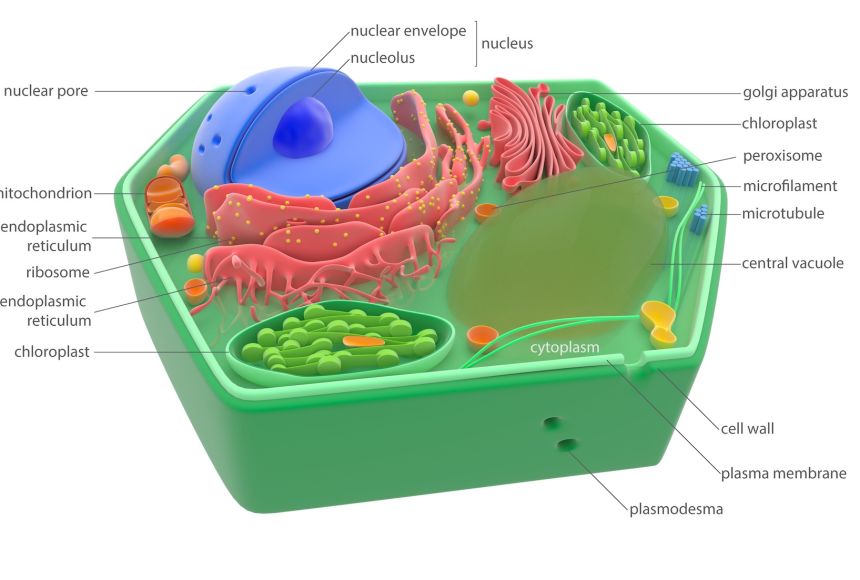As is often repeated, cells are the basic building blocks of all life. They are responsible for generating the energy that sustains life, eliminating waste, and replicating to replace damaged tissues. From single-celled organisms to humans, complex function is possible because of cells and the versatile functions of their parts.
Some organisms consist of a single cell with only the most basic components: genetic material (DNA), ribosomes, cytoplasm, and a cell membrane. Bacteria, for example, consist primarily of these most basic parts of a cell, and sometimes also a cell wall. Yet bacteria are capable of causing human illnesses from mild food poisoning to deadly tuberculosis. Conversely, they are also capable of promoting human health; for example, bacteria living in complex communities in the human gut aid in digestion and nutrient absorption, among other things.
Due to the dynamic capabilities of their limited cell parts, bacteria are also able to form biofilms, a layer of many microbes held together by a film of secreted molecules that protect the bacteria. The secretory capabilities and properties of the bacterial cell membrane, including cell surface structures, such as proteins and flagella, contribute to bacteria’s ability to form biofilms. Some biofilms are harmful and may grow on medical equipment and cause infection. They also form on industrial materials, like oil and gas pipelines. Biofilm-associated corrosion of these materials accounts for 20 percent of total corrosion damages, costing billions of U.S. dollars to prevent and fix. This type of corrosion may even result in environmental damages from pipeline leaks.
Genetic material has the ability to exist in mobile segments, which allows bacteria to exchange portions of DNA through a process called horizontal gene transfer. Unlike vertical gene transfer, which occurs when a parent passes on DNA to their offspring, horizontal gene transfer involves genetic material moving from one living organism to another, regardless of relatedness. This capability allows the rapid spread of antibiotic resistance in bacteria. Horizontal gene transfer is more common in prokaryotic organisms, such as bacteria, because they lack a nuclear membrane that protects an organism’s genetic material from foreign DNA.
More complex single-celled organisms, such as yeast, are eukaryotic—that is, they contain a nucleus as well as other organelles, specialized cell parts that perform specific functions. These organelles allow the yeast to perform processes like fermentation, which humans have harnessed for our use and enjoyment in making bread, wine, beer, and even biofuel. Fermentation is possible because of certain enzymes within yeast that allow it to convert sugars into alcohol. Enzymes are proteins, and like all proteins, they are produced by ribosomes within a cell.
Other single-celled organisms, such as cellular slime molds (a type of amoeba), can aggregate to form a multicellular structure. These social amoebas will function as individual organisms when soil nutrients are present. In times of low nutrients, however, they band together to migrate in a slug-like form to search for food. The cellular communication between amoebas during aggregation involves many cell parts, including the cytoskeleton and the nuclear membrane. In this case, the nuclear membrane controls the entry of key molecules from the cytoplasm into the nucleus, where these molecules regulate gene transcription, which creates RNA out of DNA.
Ultimately, the aggregate amoeba typically differentiates into stalk cells and spore cells. A large vacuole forms within stalk cells as they undergo cell death and form a column, lifting up the spore cells and then scattering them to a new location. Many cell parts play a role in this complex behavior of social amoeba—including functions of the mitochondria that are critical to cell movement, differentiation, and patterning of cells within the multicellular slug.
In true multicellular organisms, a variety of organelles allow equally incredible feats. Chloroplasts in plant cells (analogous to mitochondria in animal cells) allow the organism to capture the sun’s energy and produce food. In a developing animal, the cytoskeleton sorts critical parts and molecules within the cell to create polarity, defining the ends of the cells to enable specific functions as an embryo progresses to a developed organism.
Following development, specialized cells within multicellular organisms perform specific functions in support of the body, and diverse organelles contribute to the ability of cells to accomplish vital tasks. This specilization can create cell types. For example, mature red blood cells in mammals lack a nucleus. This gives as much cellular space as possible for a protein called hemoglobin, which allows the cell to carry oxygen from the lungs to the rest of the body. White blood cells are part of the body’s immune system and use lysosomes to engulf and destroy bacteria, preventing infection.
In a more localized example, neurons in the human brain allow problem solving, memory, and emotion. A neuron’s cell parts are critical to these functions. Neurons secrete neurotransmitters in response to environmental signals, and this secretion is regulated by organelles called Golgi bodies. These organelles are capable of making special vesicles to transport neurotransmitters outside the neuron, where they aid in cell communication to help regulate things like mood. A long axon fiber extending from the cell releases these critical signaling chemicals, and then a neighboring cell’s many fingerlike dendrites receive the signals. Internal and external cell structures work in concert to execute cell-level functions.

